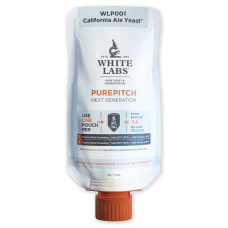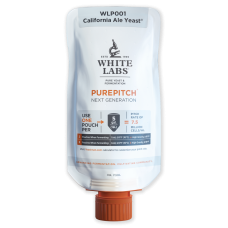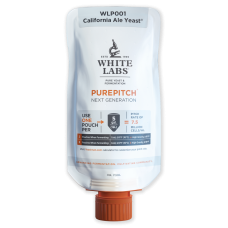Ale
-
White Labs PurePitch® Next Generation WLP077 Tropicale Yeast Blend
This is a blend of non-GMO yeast strains that have been carefully selected to aid in the release of bound thiol compounds by targeting high enzymatic B-lyase activity. Providing a balance of tropical flavors and aromas, such as passionfruit, grapefruit, and mango, that’s perfect for a juicy, hazy IPA!
-
White Labs PurePitch® Next Generation WLP080 Cream Ale Yeast Blend
A blend of ale and lager yeast, this strain produces a classic cream ale. The blend produces a pleasing light fruity note from the ale yeast, while the lager strain produces clean pilsner-like flavors and a slightly subdued hop bitterness. This blend is known for producing subtle sulfur during primary fermentation.
PLEASE NOTE: This yeast has a BBD of 24/11/25 and has therefore been reduced in price. We believe this yeast will still have good viability but if you are not happy with it's performance, please contact us for a full refund.
-
White Labs PurePitch® Next Generation WLP091 Best Coast Hazy Ale Yeast Blend
East vs West has long been a battle… cities, weather, pizza, rap… and now IPAs. Who does it better? Luckily our new Hazy blend will produce amazing hazy beers- coast to coast and beyond.
When used in conjunction with new-world modern hops, this blend produces amazing hazy beers by accentuating hop aroma reminiscent of fresh citrus and tropical fruit. -
White Labs PurePitch® Next Generation WLP1983 Charlie’s Fist Bump Yeast
Licensed from Charlie Papazian, this strain can ferment at both ale and lager temperatures, allowing brewers to produce diverse beer styles. The recipes in both Papazian’s books, The Complete Joy of Homebrewing and The Homebrewer’s Companion, were originally developed and brewed with this yeast.
Ales: Optimum cellaring temperature: 50 to 55°F (10-13°C);
Altbiers can be cellared at lagering temperatures.
Lagers: Optimum cellaring temperature: 32 to 37°F (0-3°C)
Out of Stock -
White Labs PurePitch® Next Generation WLP002 English Ale Yeast
WLP002 is a classic ESB strain from one of England’s largest independent breweries. While it is traditionally used for English-style ales including milds, bitters, porters, and stouts, it is also ideal for American-style pale ales and IPAs. Residual sweetness accentuates malt character along with mild fruity esters, adding complexity to the flavor and aroma of finished beers. Slight diacetyl production is common. Due to this strain’s high flocculation, the beer will finish clear and the yeast can easily be harvested from the fermenter for future use. It is common for this yeast to look coagulated.
Out of Stock










